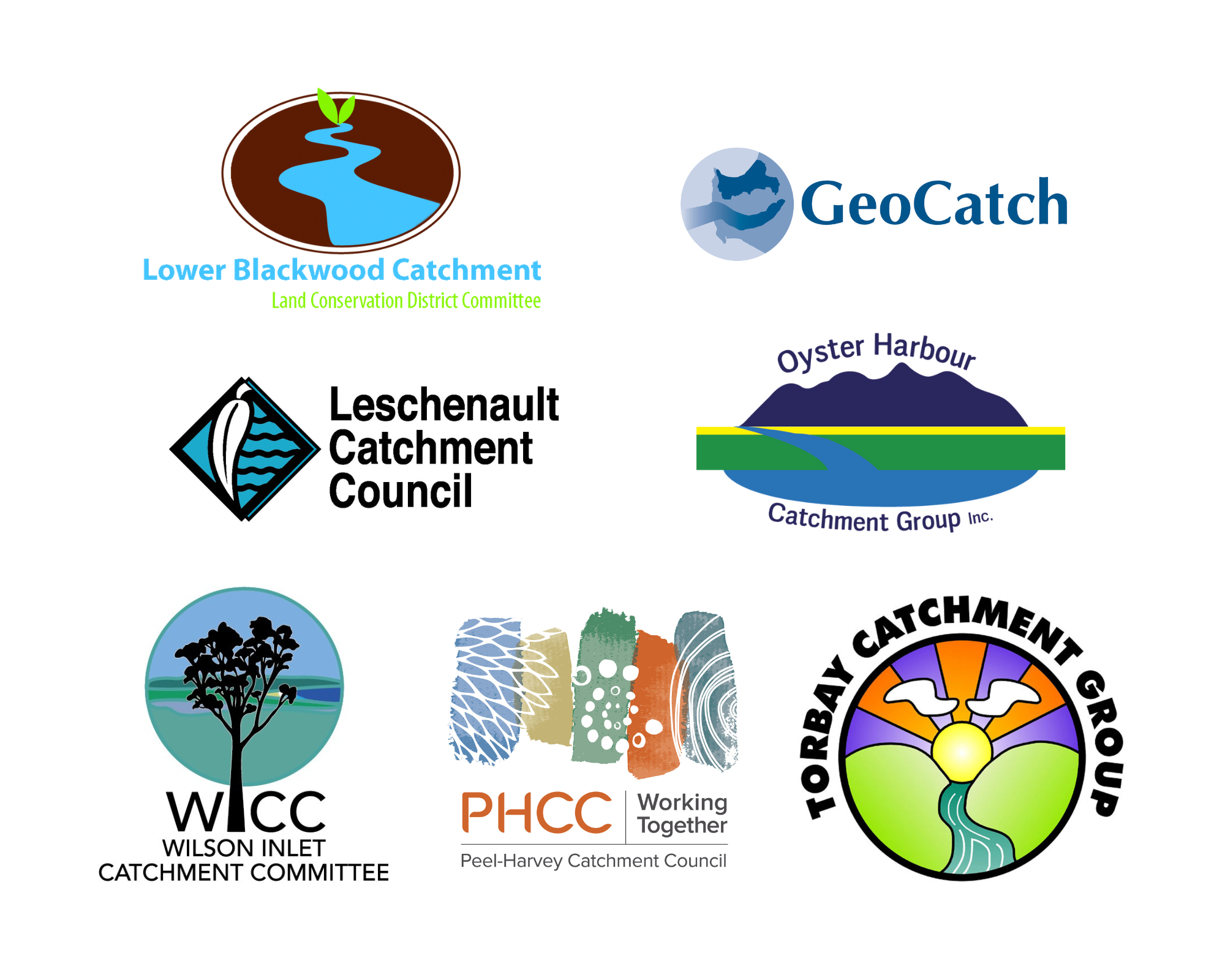Case Study: Multi-Species Pastures
Runnymede Farm
Peel-Harvey Catchment, Western Australia
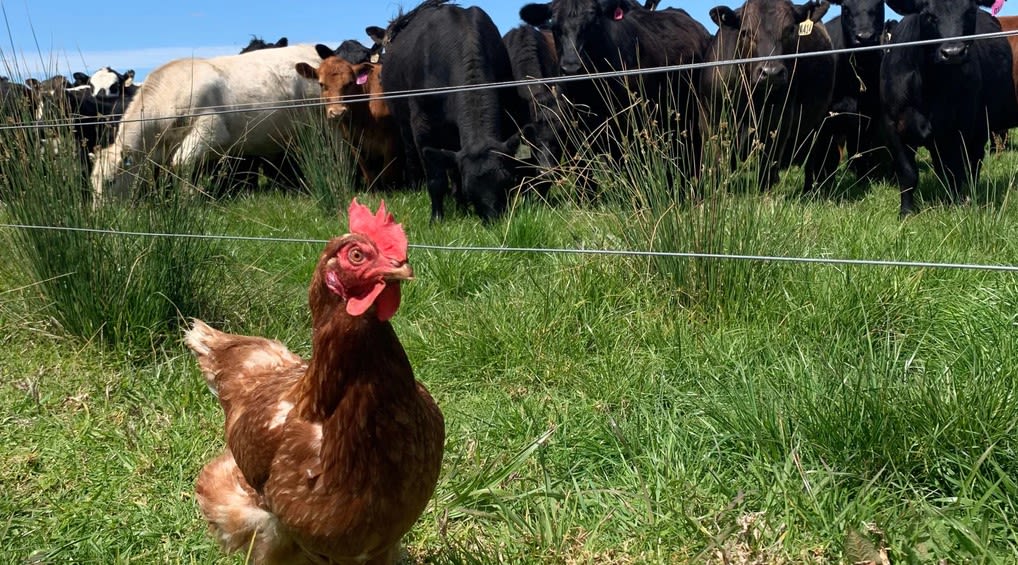
Runnymede Farm | Fact File
Location: Uduc region near Harvey, Western Australia
Land Owners: Blythe Calnan and partner Gregg Hooper
Farm Size: 500 acres
Production: 400 chickens (producing pastured eggs) + 140 head of grass-fed beef (breeders)
Soil Profile: Ranges from straight clay to heavy sand. Previously had high inputs of NPK
Water: The area has high rainfall (between 850 and 900 mm per year)
Topography: Small sand hill risers, clay flats
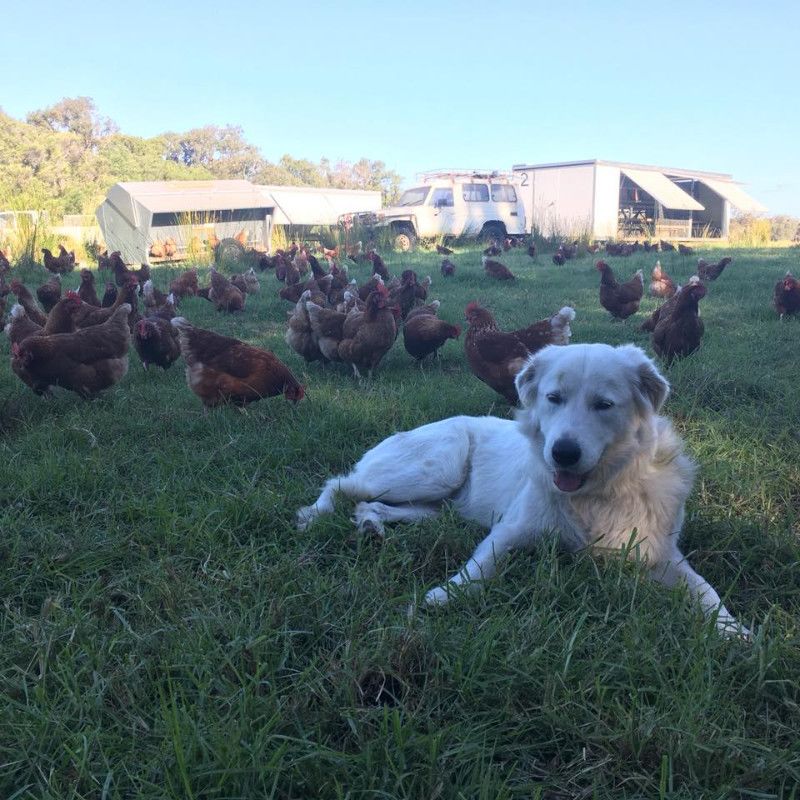
Runnymede Farm
Runnymede Farm
Background:
Blythe and Gregg both have backgrounds in agriculture, farming and animal welfare - but their regenerative agriculture journey started when they each saw how landscape and animal health were battling it out across the world.
Gregg was working in aviation and was seeing the ground from the air - giving him a birds eye view of how land was being managed, and the impact livestock was having on the landscape. Blythe was travelling a lot internationally and noticing the links between livestock production and land degradation - which was heart-breaking for someone so committed to animal wellbeing and agriculture.
They both started listening to some of the luminaries of the regen ag movement. Joel Salatin and Allan Savory were immediate mentors for the couple.
In 2013 Blythe was awarded the Cattle Council rising champion. As part of the award, Blythe had the opportunity to network with other like-minded, ambitious individuals in Agriculture and travel to Mexico and Texas as part of The International Beef Alliance. “As I travelled was becoming more and more conscious of the land degradation that was occurring in livestock production systems around the world”. Blythe admits that something didn’t sit right with the way some livestock producers were getting their results and the outcomes from the land, and the impacts this was having on land, people and the animals. The other factor this equated to for Blythe was the future food security problem that could occur due to the desiccation of the land, which she was already seeing throughout her travels internationally. (Source: Rural Regional Remote Women's Network)
Runnymede Farm:
They moved to the south-west in 2014 with 100 acres, then built up their land through lease blocks before securing their current farm in 2019.
The farm is a former dairy property. Sadly the owners were forced out of dairying in 2016 due to the Browns contract cuts (their family had milked for 150 years), but Blythe had worked with the family doing some relief milking on the weekends to build her farming knowledge, so the family was pleased that she and Gregg could take it on.
Right from the start of their own farming journey they were seeking a way to work more harmoniously with the land. Due to her background with beef cattle the farm was slowly transitioned to stock from north western Australia, and they have since used genetics from the Pharo Cattle Company in Colorado to grow a herd that thrives in the grass-fed regenerative environment. The herd has an Angus base with some Speckle Park genetics to build a robust, resilient and highly productive animal.
Land use:
Primarily most of the land area is used for the beef operation. The couple has worked through a few farming models to work out what works best for them - they've previously tried beef backgrounding (farmers add kilos to the cattle and are paid per kilo gained), agistment and grass finishing. The plan is now to reduce their herd size and increase their finishing capacity.
Regenerative Farming:
Blythe and Gregg wanted to focus on the health of the whole farming system - restoring and maintaining natural capital, improving soil health and improving water holding and management capacity.
With 500 acres of pasture, they rotate the chickens and the cattle through the land. The chickens spread the cow manure and eat the bugs and the chicken poo fertilises the grass. When the chickens move on, the area rests for at least six weeks, allowing the pasture to regenerate for the cattle.
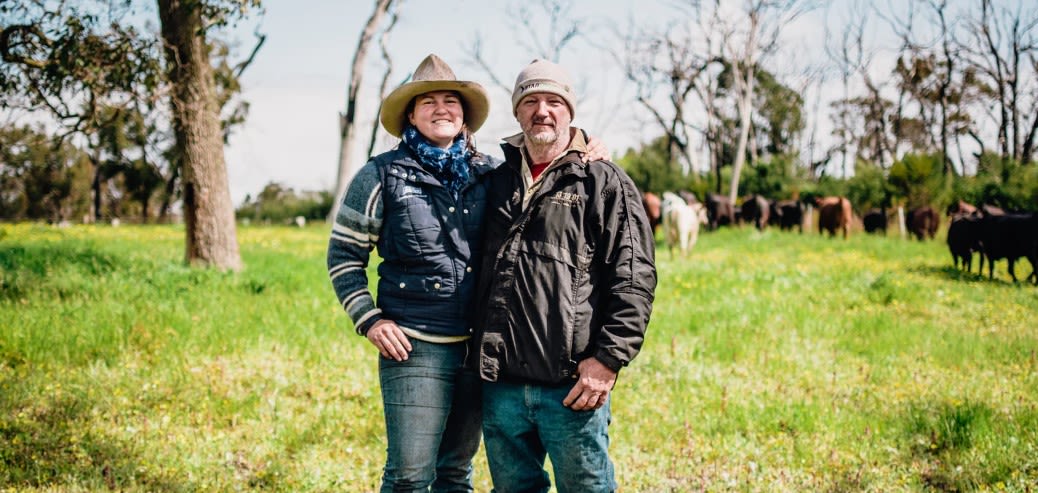
Blythe Calnan and Gregg Hooper (Image: DirtyCleanFood)
Blythe Calnan and Gregg Hooper (Image: DirtyCleanFood)
Greening Farms Project
Blythe and Greg signed up for the Peel-Harvey Catchment Council's Greening Farms project - a program that works with farmers to protect, enhance and plant native vegetation on farms across the Peel-Harvey catchment to improve protection of existing vegetation and utilise innovative management techniques to increase farm biodiversity, productivity and improve soil condition.
Dirty Clean Food
Runnymede Farm is a provider for Dirty Clean Food, "a food brand run by a diverse group of people that is working to reinvent the way the world grows, thinks about and buys food to create a better future for people and the planet".
The organisation works exclusively with farmers who are practising regenerative agriculture, and Runnymede supplies pasture raise eggs.
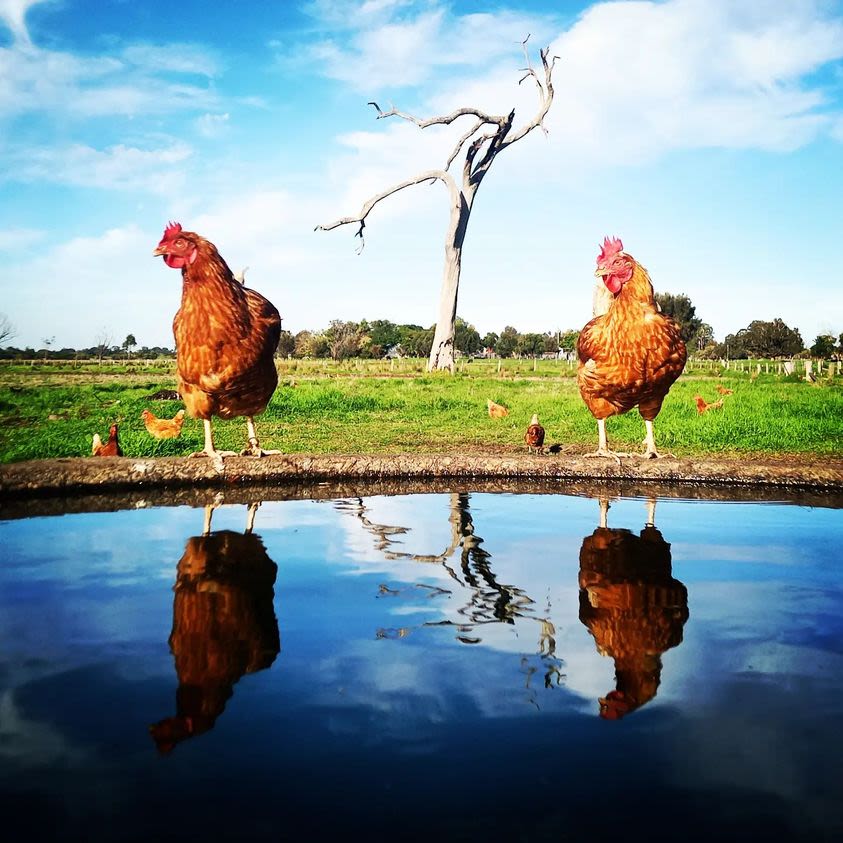
Runnymede Chickens
Runnymede Chickens
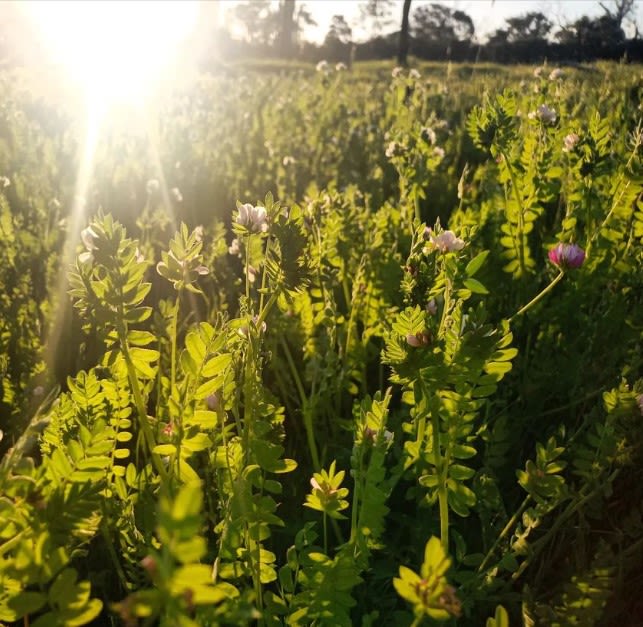
Multi-species paddock at Runnymede Farm
Multi-species paddock at Runnymede Farm
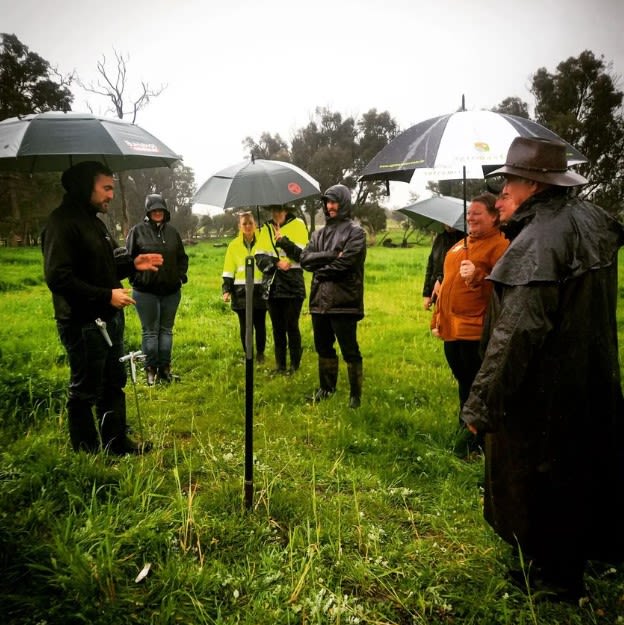
High Rainfall! Multi-species farming expert Grant Sims visited Runnymede Farm as part of the Soil Wise Roadshow
High Rainfall! Multi-species farming expert Grant Sims visited Runnymede Farm as part of the Soil Wise Roadshow
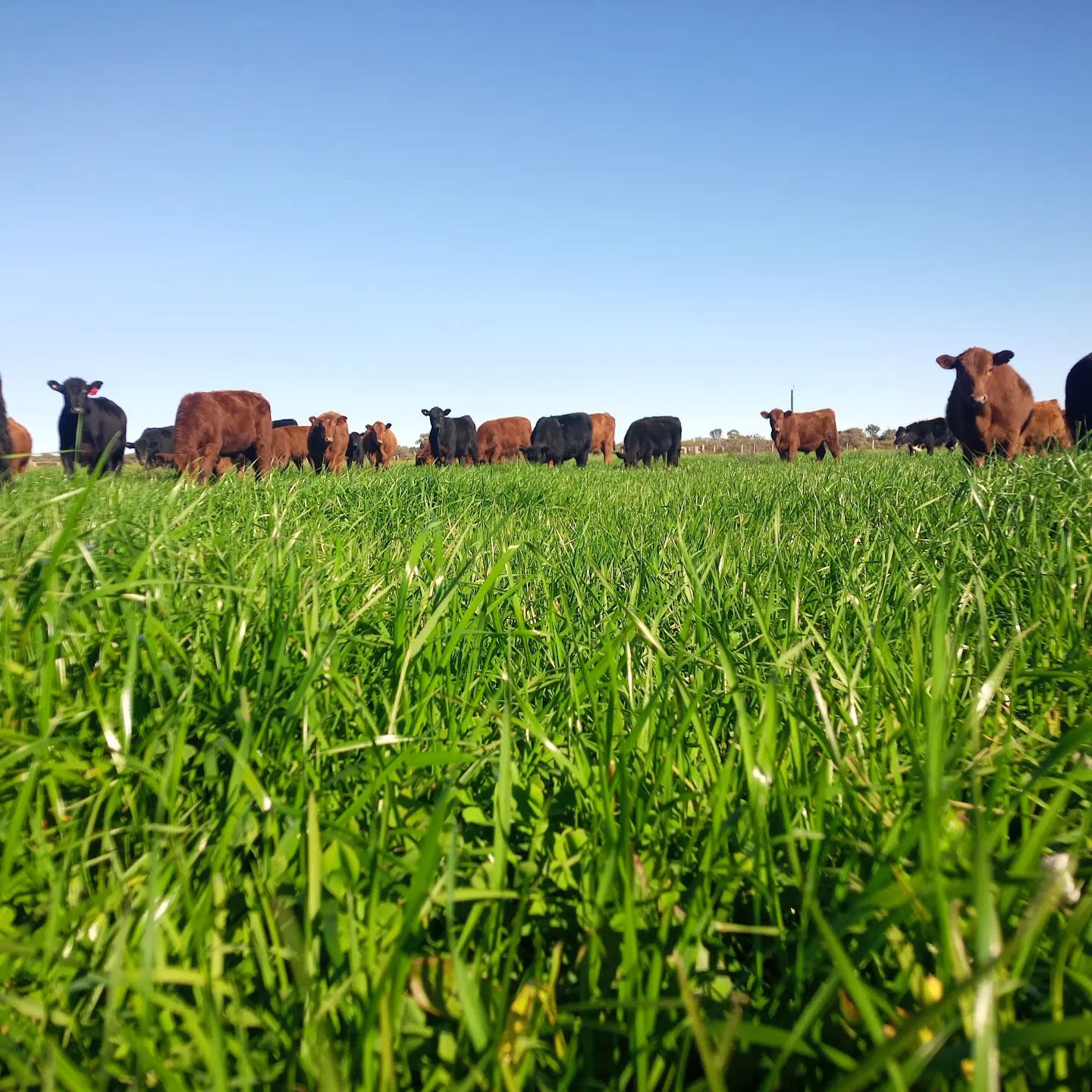
Grazing paddocks at Runnymede Farm
Grazing paddocks at Runnymede Farm
Multi-Species planting at Runnymede Farm: Goals
Blythe recognised that the ongoing use of synthetic fertilisers and fungicides was having a negative impact on her soils. She was seeking a way to reduce that reliance - and realised that the biological input of multi-species plantings could boost her soil health
When the couple first arrived at the farm they described it as a 'diesel powered swamp' in summer due to the irrigation systems. Waterlogging was a significant issue on the flats, creating an anaerobic, compacted shallow root zone. Blythe was seeking a way to both reduce the waterlogging issue and also find plants that may survive the flooded pastures.
Blythe spent time learning from experts such as Dr Christine Jones, who suggested that careful consideration around which plants to use in a multi-species mix could supress weeds. Christine explained that by identifying the invasive weeds then selecting and planting a preferred plant within that same family push the unwanted weed out of the paddock (essentially, the weed was showing that the environment was conducive to growth, so why not work with Mother Nature, rather than against her).
Everything Blythe and Gregg were doing was to improve animal health, and they realised that want's good for soil is good for animal production. Diets rich in secondary plant compounds (bioflavonoids, carotenoids, polyphenols, anthocyanins etc) increase microbial diversity in the gut, increase ability to digest a wide variety of feeds and improve growth rates.
One of the most important goals of the multi-species project was to build some pasture resilience against the likely pressures of climate change. Although Runnymede is in a high rainfall environment, multi-species pastures could extend the growing seasons by including different plants, protecting the bare earth from exposure to heat and run-off, and boosting the biological structure of the soil.
Blythe's definition of drought: 'Not having enough feed when you expect to have feed, be that through lack of rainfall, too much rainfall or poor management.'
The Value of Plant Families
There's nothing more disappointing than spending a fair bit of money on seed and having to track around and not even find a single seedling. But there are multiple advantages to planting more plant families.
Pioneer plants such as chicory and plantain can break through first, creating deep roots and ground cover, potentially protecting the more delicate plants or those that may push through later.
Sunflowers are a wonderful mycorrhizal host, and are unlikely to be grazed until later in the cycle when the oils in the seeds are tastier.
Millet works worked well for Runnymede Farm - particularly in the summer mixes.
When this mix is more established and starting to build soil health, buckwheat and linseed could be a valuable addition to the mix.
Different plant families provide different root shapes and root systems below the ground and various leaf shapes above it. This diversity allows the plants to play their different, complementary roles, all contributing in their own way to soil health. A diversity of plants means a diversity of plant microbes, and soil microbial diversity underpins virtually all functions that we want our soil to perform for us.
Reliable species such as rye grasses are a good feed base and grew in the waterlogged environment at the start of the process.
Be a soil manager - not a beef farmer
The journey into regenerative agriculture and the adoption of multi-species pastures has caused Blythe and Gregg to reconsider their roles in farming. Instead of focusing on their stock, they now focus on their soil health.
"If you focus on increasing your stocking rate without increasing your capabilities in your carrying capacity you're going to be in a downward spiral." - Blythe
The core driver of profitability and productivity has become the soil, not the stock. To Blythe, that shift take helps to ease the external pressures of farming. It almost feels more manageable because she's dealing with something that she can see, feel, manage and measure.
Farming is an industry that is inherently dependent on factors that are out of the farmers' day-to-day control. Climate, rainfall, politics and market fluctuations are a constant cause of intense stress.
In a survey by the National Farmers Federation 45% of farmers reported thoughts of self harm or suicide due to such high levels of anxiety.
"We live in a world of worry instead of control and hope. More confidence in our decisions could help to remove some of that debilitating stress." - Blythe
Soil health is something that farmers can control, and Blythe believes that switching focus from stock to soil can have a significant positive impact on mental health - as well as farm health. She believes that the role of plants and cover crops could extend the pasture seasons and help with budgeting, feed security and planning - ultimately allowing farmers to be on a more positive trajectory.
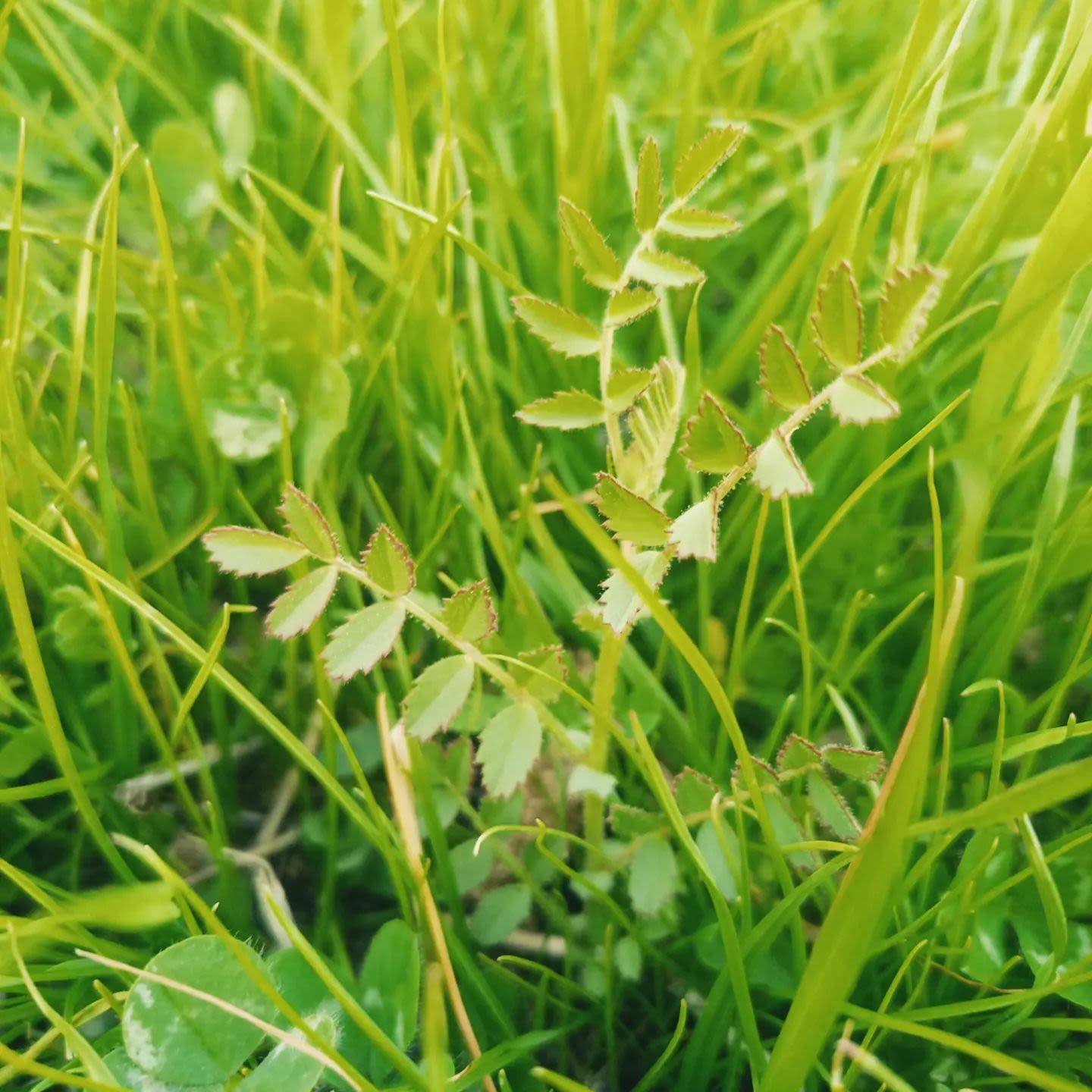
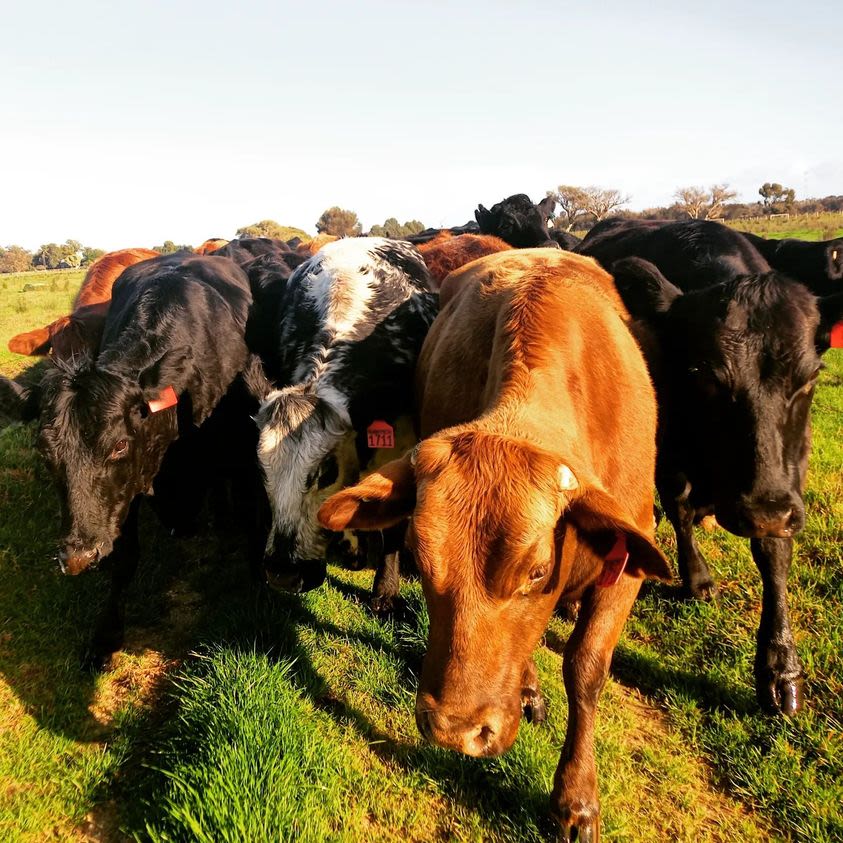
Advice
Runnymede started from a very low biological baseline so many plants that they initially planted just didn't thrive.
ADVICE: Consider your soil before you plant. If your biology is weak, start with robust plants that will cope with those conditions rather than just using a multi-species mix where many of the plants in that mix are too sensitive for your environment. Build health and function into your soils then increase your plant diversity, 'otherwise you're just throwing $50 notes over your shoulder' (Blythe Calnan)
Issue: After a significant planting, many of the species didn't come up when they were expected
ADVICE: It's not always what happens above the ground that counts - it's often what you can't see that makes a big difference. Even if the seeds don't grow immediately, they are working hard underground and boosting your soil health and viability.
Issue: Changing mindset...
ADVICE: Need to make the mental shift from being beef farmers to being grazing and soil managers
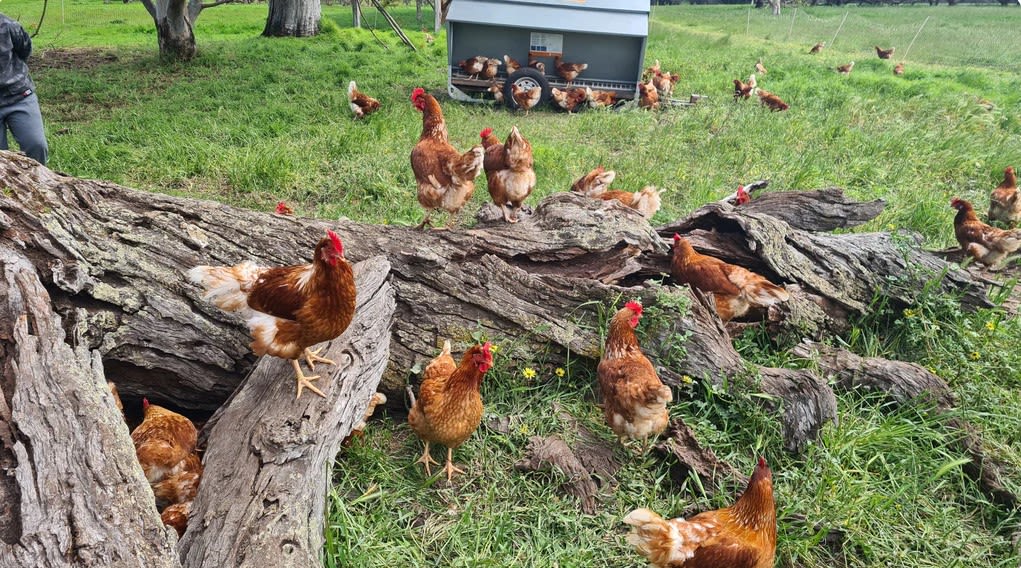
Conclusion
Blythe recognises that multi-species planting isn't the complete solution to building soil health, but believes that it is an intrinsic and vital part of the regenerative farming process.
She believes that healthy soil is the key to any successful farming enterprise, and by leveraging local expertise and advice on plant species and families that thrive together to nurture soil health is will be her blueprint for managing her own farm.
However, she concedes that it isn't a quick fix. A weak soil takes time to become more robust, and it could easily take at least tow years of building a functioning biological system before even considering the introduction of perennials onto the system.
Now she has completely re-evaluated her role as farmer. She no longer grows cattle or chickens. She is a grazing and soil manager - when she gets that right, the rest follows naturally.
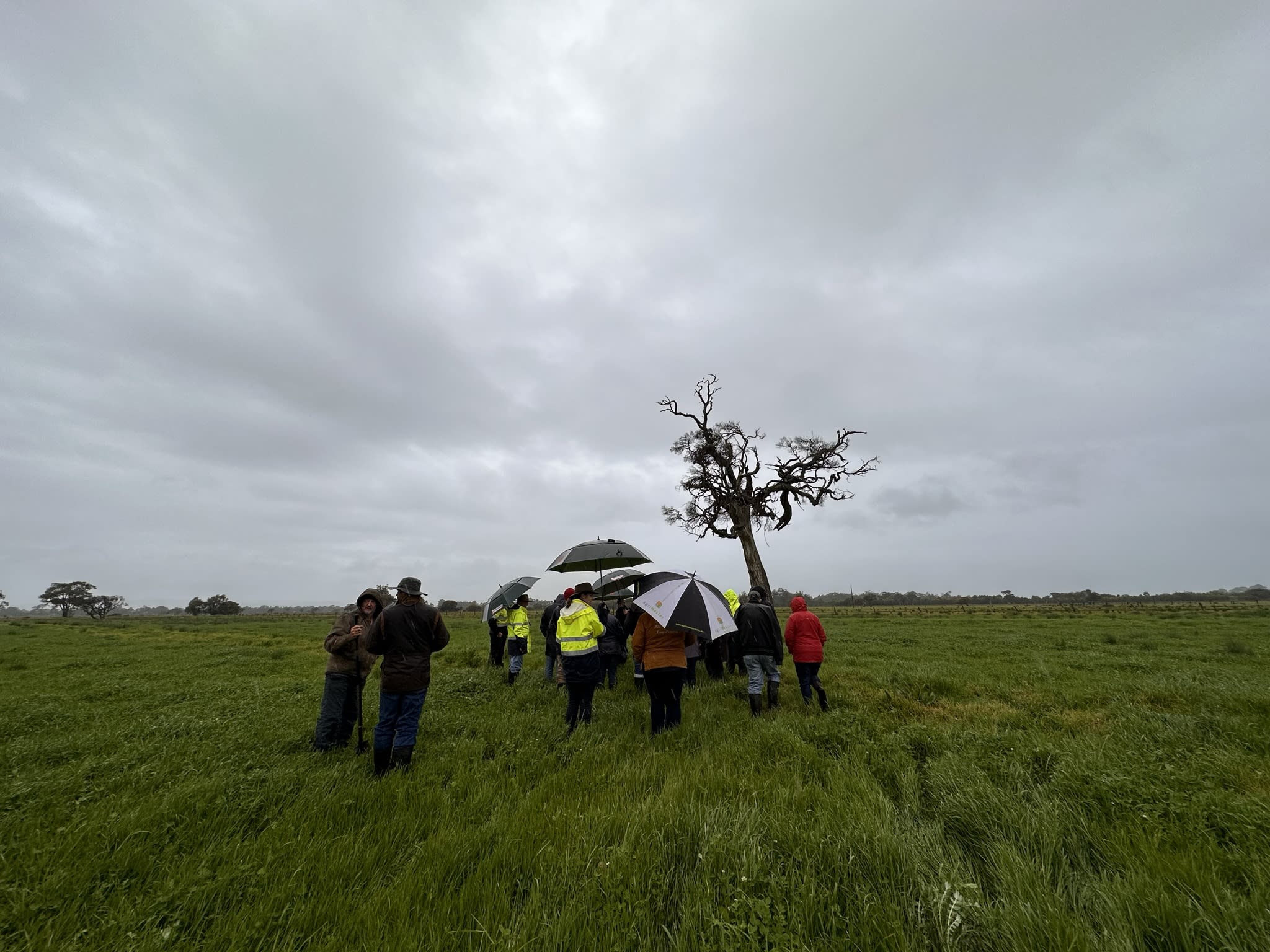
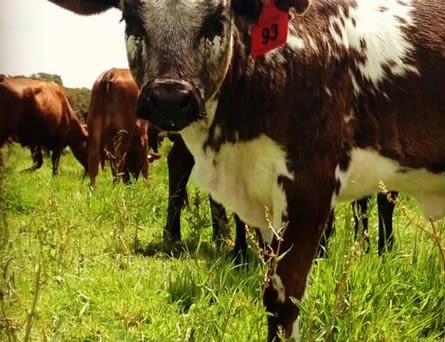
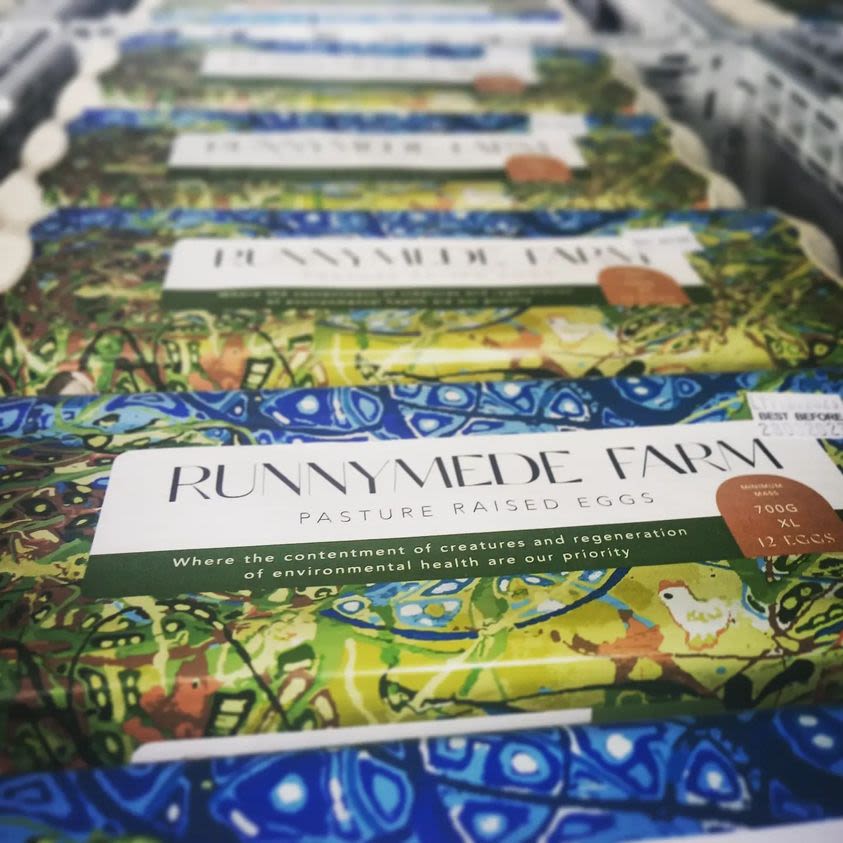



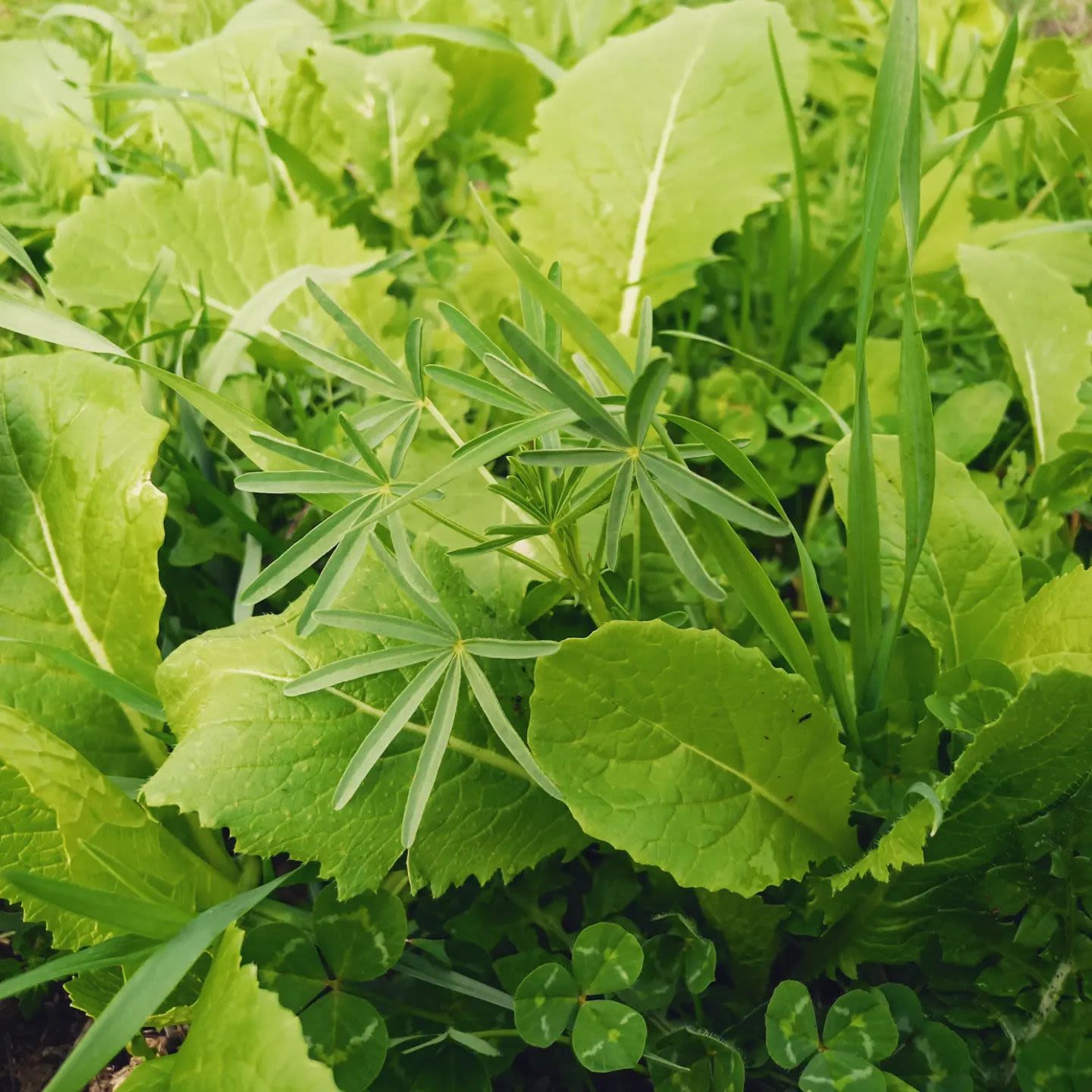

Heavy rains at Runnymede Farm
Heavy rains at Runnymede Farm






This case study was produced by 'Talkin' After Hours', the Lower Blackwood Landcare's Online Community & Information Hub
The case study forms part of a collaborative roadshow that took place across seven catchments in the south west of WA in July and August 2023 to encourage farmers and landholders to build their knowledge and skills to use multi-species pasture and cropping within their sustainable agriculture programs.
The roadshow was coordinated by the Lower Blackwood LCDC in collaboration with six other catchment groups across the southwest, and is funded through Soil Wise. Soil Wise is funded by the National Landcare Program Smart Farms Small Grants – an Australian Government initiative. It is supported by Healthy Estuaries WA – a State Government program.


